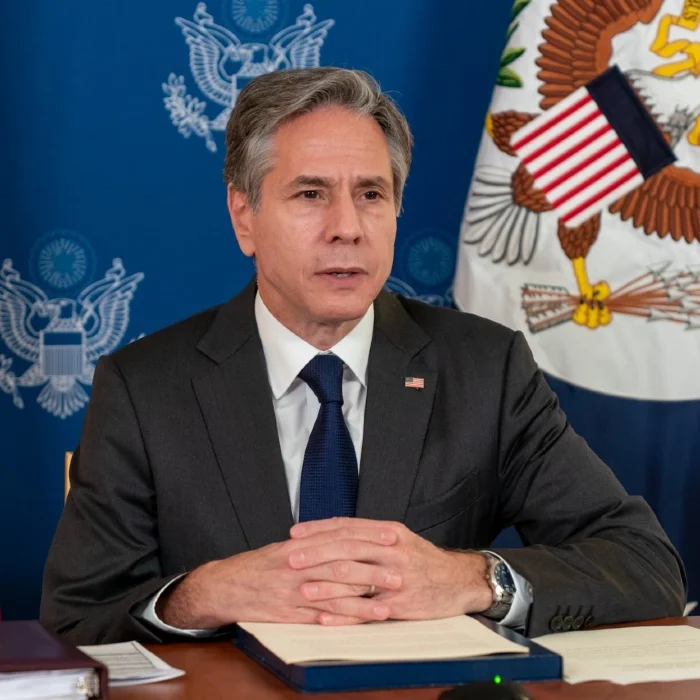China is now experimenting in space for its non-kinetic warfare strategies. It is believed to be trying to hack into satellite communication of other countries and hijack these satellites.
Military Intelligence veteran Col. Vinayak Bhat told India Narrative that China had launched a satellite into space in August. After nearly three months of this launch, space scientists realised around late October that there was another unknown object which was in close proximity to this satellite. Bhat says that this discreet and unknown object is now believed to be a secret satellite which was launched along with the first one.
The military veteran says that while the rest of the world is confused about concepts like hybrid warfare, grayzone warfare and kinetic warfare, the Chinese are clear about the “three wars – psychological wars, media wars and legal wars”. He added that China is now exploring space in a big way for not just for surveillance but for warfare as well.
Bhat was speaking at the Maharana Pratap Annual Geopolitics Dialogue in Udaipur, organised by the Usanas Foundation.
Talking about the propaganda and cyber-security tactics of the Chinese, Bhat elucidated that three entities in China work on propaganda. These include the ministry of Foreign Affairs which uses propaganda through global social media platforms; the United Front Works Department which influences students and writes articles in newspapers like The Hindu and American media and lastly the PLA Strategic Support Force (PLASSF) which indulges in hacking all over the world and targets people who speak against Chinese President Xi Jinping.
Citing examples, Bhat said that China will release photographs that show Shanghai’s transformation while the reality is that the glamorous skyline hides the less developed and modest parts of Shanghai. Similarly, China has released photographs showing its tanks rolling in Taiwan creating a false impression that Taiwan has been invaded.
In a discussion on ‘Grayzone Warfare: Cybersecurity Challenges for Business and Governments’, experts discussed how India has become a victim of unending propaganda.
Satellite Photos Show Chinese Anti-Satellite Laser Base via @freebeacon https://t.co/GMmuBcUd1z
— Boycott China Hegemony (@BoycottHegemony) April 1, 2019
Speaking on how propaganda around Kashmir, noted journalist Aditya Raj Kaul said that it was not just the terrorists it was also the media that played a big part in spreading disinformation in Jammu and Kashmir (J&K). Kaul said that the disinformation against India works at many levels with the involvement of deep state actors as well as State-funded news organisations in the Middle East.
Kaul mentioned how nobody in India knows much about Khalistani separatist Amritpal Singh but he has become a global phenomenon with protests taking place in foreign capitals. Talking about solutions he said that India needs to establish a disinformation lab. “It has to be a State-led effort with private players”.
Senior Fellow Observer Research Foundation (ORF) Sameer Patil said that if India has to battle misinformation and fake news, the country will have to develop an eco-system of social media platforms. He said that social media platforms are going against the government by citing privacy and free speech and even moving the courts. Patil added that the same social media companies comply with governments in the West but not in India.
He also said that another challenge in South Asia is that people do not have an understanding of cyber space. They do not know what is misinformation or propaganda on social media.
Highlighting the complexity of India’s problems, police officer Shiv Murari Sahai said that for India all internal problems are eternal issues. He added that the country’s internal problems pose geo-strategic challenges as well because many of these stem from the time of creation of Pakistan and continue to persist for India.
Sahai also gave an insight into the minds of youth. He said that many killings in Punjab recently have been committed by youth from Haryana and west Uttar Pradesh. Sahai added that many youth find life meaningless therefore want glory even if it is attained through killings. It is here that technology is fuelling negative attitudes in young people. “The generation change is happening faster now”, Sahai said, adding that the government will always be lagging behind this attitudinal change among the youth.
Also read: India must invest in mission mode on critical technologies, economy to stave off China challenge







 The military veteran says that while the rest of the world is confused about concepts like hybrid warfare, grayzone warfare and kinetic warfare, the Chinese are clear about the “three wars – psychological wars, media wars and legal wars”. He added that China is now exploring space in a big way for not just for surveillance but for warfare as well.
The military veteran says that while the rest of the world is confused about concepts like hybrid warfare, grayzone warfare and kinetic warfare, the Chinese are clear about the “three wars – psychological wars, media wars and legal wars”. He added that China is now exploring space in a big way for not just for surveillance but for warfare as well.








